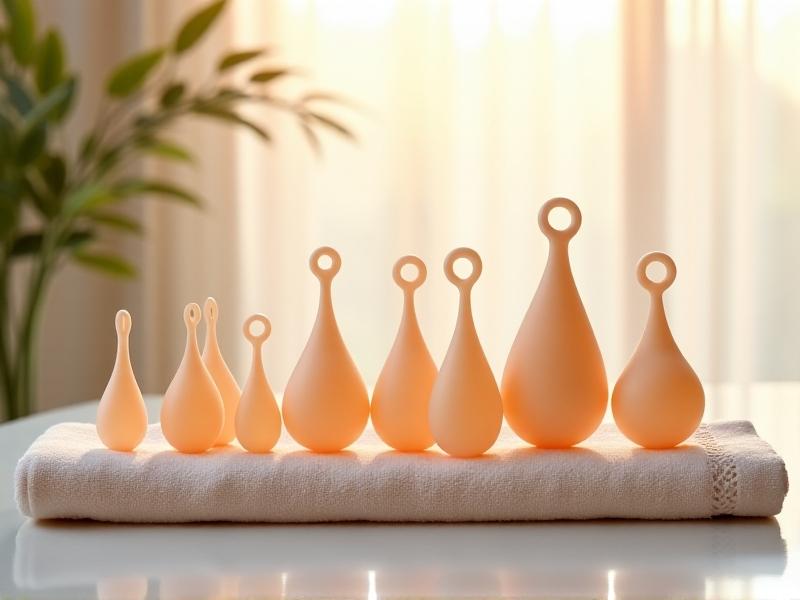Post-C-Section Belly Binding Techniques
Understanding Post-C-Section Belly Binding
Post-C-section belly binding is a traditional practice that has gained modern recognition for its potential benefits in postpartum recovery. This technique involves wrapping the abdomen with a supportive band or cloth to provide stability, reduce swelling, and promote healing. While it has been used for centuries in various cultures, recent studies have highlighted its effectiveness in aiding recovery after a cesarean delivery. The binding helps to support the abdominal muscles, which are often weakened during pregnancy and surgery, and can also provide psychological comfort by creating a sense of containment and security.
For many new mothers, the postpartum period can be physically and emotionally challenging. The body undergoes significant changes, and the recovery process can be slow and uncomfortable. Belly binding can be a helpful tool in this journey, offering both physical support and a sense of control over one’s body. However, it’s important to approach this practice with care and knowledge, as improper binding can lead to discomfort or even complications. Understanding the proper techniques and timing is crucial for maximizing the benefits while minimizing risks.

Benefits of Belly Binding After a C-Section
Belly binding offers a range of benefits for women recovering from a C-section. One of the primary advantages is the support it provides to the abdominal muscles, which are often stretched and weakened during pregnancy and surgery. By gently compressing the abdomen, the binder helps to reduce swelling and promote the natural healing process. This can lead to a faster recovery and a reduction in post-surgical discomfort.
In addition to physical support, belly binding can also have psychological benefits. Many women report feeling more secure and confident when wearing a binder, as it helps to create a sense of containment and stability. This can be particularly helpful during the early postpartum period, when the body is still adjusting to its new state. Furthermore, belly binding can aid in improving posture, which is often compromised during pregnancy and after delivery. By encouraging proper alignment, the binder can help to alleviate back pain and promote overall comfort.
It’s important to note that while belly binding can be beneficial, it is not a substitute for proper medical care. Women should consult with their healthcare provider before starting this practice, especially if they have any underlying medical conditions or complications from their C-section. With the right guidance and approach, belly binding can be a valuable tool in the postpartum recovery journey.

Choosing the Right Belly Binder
Selecting the right belly binder is a crucial step in ensuring a comfortable and effective postpartum recovery. There are several factors to consider when choosing a binder, including the material, size, and level of support. The material should be breathable and comfortable, as the skin around the abdomen can be sensitive after a C-section. Look for binders made from soft, hypoallergenic fabrics that allow for proper airflow and reduce the risk of irritation.
Size is another important consideration. A binder that is too tight can cause discomfort and restrict circulation, while one that is too loose may not provide adequate support. It’s essential to measure the abdomen accurately and choose a binder that fits snugly without causing pressure or discomfort. Many binders come with adjustable straps or closures, allowing for a customized fit as the body changes during the recovery process.
The level of support provided by the binder is also a key factor. Some women may prefer a firmer binder for maximum support, while others may opt for a softer, more flexible option. It’s important to choose a binder that meets individual needs and preferences, as comfort is paramount during the postpartum period. Consulting with a healthcare provider or a postpartum recovery specialist can provide valuable guidance in selecting the right binder.

How to Properly Bind Your Belly After a C-Section
Proper technique is essential when it comes to belly binding after a C-section. The process should be done with care to ensure that the binder provides the right level of support without causing discomfort or restricting movement. Start by lying down on a flat surface, as this allows the abdominal muscles to relax and makes it easier to apply the binder. Place the binder around the abdomen, ensuring that it covers the entire area from the hips to just below the ribcage.
When securing the binder, make sure it is snug but not too tight. The goal is to provide gentle compression that supports the abdominal muscles and promotes healing, without putting excessive pressure on the incision site. Adjust the straps or closures as needed to achieve a comfortable fit. It’s important to check the binder regularly throughout the day to ensure that it remains in the correct position and does not become too tight.
Timing is also an important factor in belly binding. Many women start using a binder within the first few days after their C-section, but it’s important to listen to your body and avoid overdoing it. Gradually increase the amount of time you wear the binder each day, and take breaks as needed to allow the skin to breathe. Remember that belly binding is just one part of the recovery process, and it should be combined with other self-care practices, such as rest, proper nutrition, and gentle exercise, for optimal results.
Common Mistakes to Avoid When Binding Your Belly
While belly binding can be a helpful tool in postpartum recovery, there are some common mistakes that women should avoid to ensure a safe and effective experience. One of the most common errors is using a binder that is too tight. While it may seem like tighter binding would provide more support, it can actually restrict circulation, cause discomfort, and even delay healing. It’s important to choose a binder that fits snugly but allows for comfortable breathing and movement.
Another mistake is wearing the binder for too long without taking breaks. While it’s beneficial to wear the binder for several hours each day, it’s also important to give the skin and muscles a chance to rest. Prolonged use of a binder without breaks can lead to skin irritation, discomfort, and even complications. Aim to wear the binder for a few hours at a time, and remove it periodically to allow the skin to breathe.
Finally, some women make the mistake of relying solely on belly binding for their recovery. While it can be a helpful tool, it’s important to remember that it is just one part of the postpartum recovery process. Proper nutrition, rest, and gentle exercise are also essential for healing and regaining strength. Consulting with a healthcare provider or a postpartum recovery specialist can provide valuable guidance in creating a comprehensive recovery plan that includes belly binding as part of a holistic approach to postpartum care.
Alternative Techniques for Post-C-Section Recovery
While belly binding is a popular and effective technique for post-C-section recovery, there are also alternative methods that can complement or even replace this practice. One such method is the use of postpartum girdles, which provide similar support to the abdomen but often come with additional features such as adjustable straps and reinforced panels. These girdles can be particularly helpful for women who prefer a more structured form of support.
Another alternative is the use of kinesiology tape, which can be applied to the abdomen to provide support and reduce swelling. This tape is flexible and allows for a full range of motion, making it a good option for women who want to maintain an active lifestyle during their recovery. Additionally, gentle abdominal exercises, such as pelvic tilts and deep breathing, can help to strengthen the core muscles and promote healing without the need for external support.
It’s important to remember that every woman’s body is different, and what works for one person may not work for another. Experimenting with different techniques and finding what feels most comfortable and effective is key to a successful recovery. Consulting with a healthcare provider or a postpartum recovery specialist can provide valuable guidance in exploring alternative methods and creating a personalized recovery plan.
When to Start and Stop Belly Binding
Timing is an important consideration when it comes to belly binding after a C-section. Many women start using a binder within the first few days after their surgery, as this is when the body is most in need of support. However, it’s important to listen to your body and avoid starting too soon if you’re experiencing significant pain or discomfort. Consulting with a healthcare provider can provide guidance on the best time to begin belly binding based on individual circumstances.
As for when to stop belly binding, this can vary depending on the individual and their recovery progress. Some women may only need to use a binder for a few weeks, while others may benefit from wearing it for several months. It’s important to pay attention to how your body feels and gradually reduce the amount of time you wear the binder as your strength and mobility improve. Stopping too abruptly can lead to discomfort or a feeling of instability, so it’s best to taper off gradually.
Ultimately, the decision of when to start and stop belly binding should be based on personal comfort and recovery goals. It’s important to approach this practice with flexibility and patience, allowing the body to heal at its own pace. Remember that belly binding is just one part of the postpartum recovery journey, and it should be combined with other self-care practices for optimal results.
Testimonials: Real Stories from Women Who Used Belly Binding
Hearing from other women who have used belly binding after a C-section can provide valuable insights and encouragement. Many women report feeling more supported and confident when wearing a binder, and some even credit it with helping them recover more quickly. For example, one mother shared that belly binding helped her to feel more secure and less aware of her incision site, allowing her to focus on bonding with her baby.
Another woman described how belly binding helped to improve her posture and reduce back pain, which had been a significant issue during her pregnancy. She also appreciated the psychological comfort that the binder provided, describing it as a “hug” for her abdomen. These testimonials highlight the diverse benefits of belly binding and the positive impact it can have on the postpartum experience.
Of course, every woman’s experience is unique, and what works for one person may not work for another. However, hearing these stories can provide inspiration and motivation for those considering belly binding as part of their recovery journey. It’s important to approach this practice with an open mind and a willingness to experiment, finding what works best for your body and your needs.








